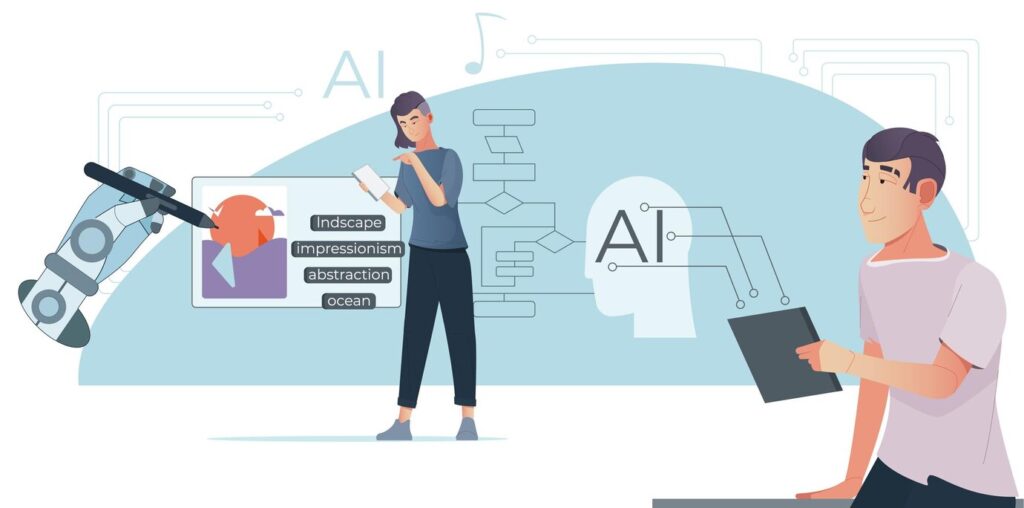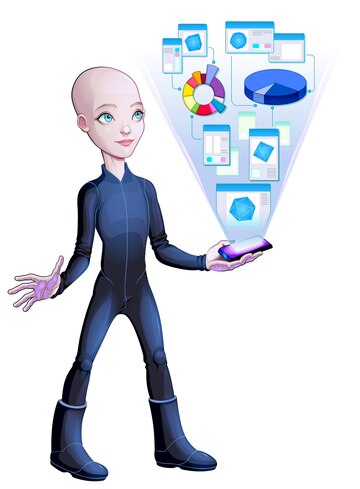
With AI transforming the way content is created, there’s an increasing demand for tools that can rewrite text naturally, preserving the original message while enhancing readability. A paraphrase tool AI to human does exactly this by converting automated, machine-generated language into text that reads as if crafted by a human. This technology serves professionals, students, and content creators who seek clarity, quality, and originality in their writing. This guide delves into the essentials of AI-to-human paraphrasing tools, how they work, their advantages, and the best options to consider.
What is an AI to Human Paraphrase Tool?
An AI to human paraphrasing tool uses advanced algorithms to transform complex, robotic text into human-like language. Unlike typical paraphrasing tools, which may simply swap synonyms or rearrange phrases, an AI-to-human paraphraser aims to create content that sounds natural and authentic. This is especially useful for content that requires a conversational tone or needs to adhere to high-quality readability standards.
Why Use a Paraphrase Tool AI to Human?
Paraphrasing tools that convert AI language into human-like text have many valuable applications:
Improved Readability: AI-generated text can sometimes feel rigid. Paraphrasing tools polish it for a smoother flow.
Enhanced Originality: These tools adjust the wording and sentence structure, allowing content to appear unique while maintaining the main ideas.
Time Efficiency: Rather than manually revising AI content, a paraphrasing tool can expedite the process, making it ideal for those with tight deadlines.
Higher Engagement: Humanized text resonates more with readers, creating an emotional connection and fostering better communication.
How Does a Paraphrase Tool AI to Human Work?
AI-to-human paraphrasing tools use machine learning and NLP (natural language processing) algorithms to analyze the text. Here’s a basic rundown of the process:
Input Analysis: The tool first analyzes the input text’s structure, language, and vocabulary.
Content Transformation: The AI then restructures sentences, substitutes phrases, and revises vocabulary to create natural language without altering the meaning.
Refinement and Adjustment: Some tools offer users control over tone or style, allowing for customizations that make the content sound even more human.
By leveraging AI’s data-driven capabilities, these tools bridge the gap between automated and human-authored text.

Top Benefits of Using an AI to Human Paraphraser
Here’s how AI-to-human paraphrasing tools can be advantageous:
Accuracy in Meaning: Unlike basic thesaurus-driven tools, these advanced paraphrasers retain the original text’s intent while rephrasing.
Time-Saving: An AI-powered paraphraser produces natural-sounding content quickly, which is beneficial for professionals on a tight schedule.
Consistency in Tone: From professional to casual, these tools allow customization to fit the desired tone.
SEO-Friendly: By providing unique content that’s also readable, paraphrasers help improve search rankings for digital content.
Best Paraphrase Tools AI to Human
Here are some of the top tools that convert AI-generated language into human-like text:
QuillBot
QuillBot is a popular paraphrasing tool that can adapt AI text to a human-friendly style. It offers various writing modes, such as Creative, Formal, and Simple, giving users control over the text’s tone. QuillBot’s interface is straightforward and provides both free and premium options.
Wordtune
Wordtune offers unique features that make it an excellent paraphrasing tool for both professionals and students. It focuses on improving clarity and can make AI-generated text sound more human. Wordtune also allows users to shorten or expand sentences to fit different contexts.
Grammarly’s Paraphraser
Known primarily for grammar and spelling checks, Grammarly has also developed an effective paraphrasing feature. This tool allows users to improve readability by providing alternatives for awkward or overly complex phrases, making it useful for humanizing AI content.
Paraphraser.io
Paraphraser.io offers a free tool that allows users to humanize AI text with reasonable accuracy. The tool supports multiple languages and offers simplicity in design, making it user-friendly for those with basic needs.

How to Use an AI to Human Paraphraser Effectively
Maximize the potential of paraphrasing tools by keeping these tips in mind:
Input Clear, Structured Text: Ensure that your source text is well-organized to receive the most accurate paraphrasing results.
Use Adjustments for Tone and Style: Many tools let you choose the output style, so select one that aligns with your needs.
Review and Edit Output: While these tools are powerful, a quick review helps catch any awkward phrasing that may still sound “robotic.”
Experiment with Different Tools: Trying a few paraphrasers can reveal which one best suits your requirements and delivers the most human-like results.
Potential Challenges with AI to Human Paraphrasing
While useful, AI paraphrasers do come with limitations:
Inconsistent Results: Some tools may struggle with complex or abstract language, occasionally generating results that still sound mechanical.
Contextual Limitations: Tools may interpret phrases out of context, especially if the input text has specific jargon or idiomatic expressions.
Need for Manual Refinement: For critical documents, it’s best to proofread the output to ensure it meets quality and readability standards.

Choosing the Best AI to Human Paraphrase Tool for You
When selecting a paraphrasing tool, consider the following:
Purpose: Are you paraphrasing for academic purposes, business content, or creative writing? Choose a tool that caters to your needs.
Budget: While some tools offer free versions, paid options usually have more advanced features and better customization.
Ease of Use: User-friendly interfaces make the paraphrasing process faster and less confusing.
Tone Flexibility: If you need various tone settings, look for tools like QuillBot or Wordtune, which offer different style modes.
The paraphrase tool AI to human revolutionizes how we can repurpose content, turning mechanical AI-generated language into relatable and engaging text. By preserving meaning and tone, these tools allow professionals, students, and creatives to work faster and more effectively without sacrificing quality. Tools like QuillBot, Wordtune, and Grammarly’s paraphraser lead the way in providing reliable, human-like results that cater to diverse needs. As AI continues to evolve, paraphrasing tools that bridge the AI-to-human gap will only become more refined, enhancing the world of digital communication.
FAQs About The Paraphrase Tool AI to Human
Are AI-to-human paraphrasing tools free?
Many tools offer free versions, but premium plans typically provide more options and better quality.
Do these tools work with complex language?
While many tools handle straightforward text well, complex language may still require manual editing.
Can I use a paraphraser for academic content?
Yes, AI-to-human paraphrasers can improve readability in academic work, though always adhere to academic honesty policies.
What’s the difference between basic and AI-to-human paraphrasing tools?
Basic tools swap words, while AI-to-human paraphrasers use algorithms for a natural and context-sensitive rewrite.
How reliable are these tools?
Most tools are quite accurate but should be used with a final review for the best results.







